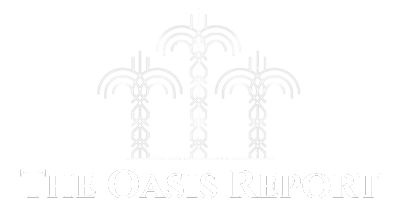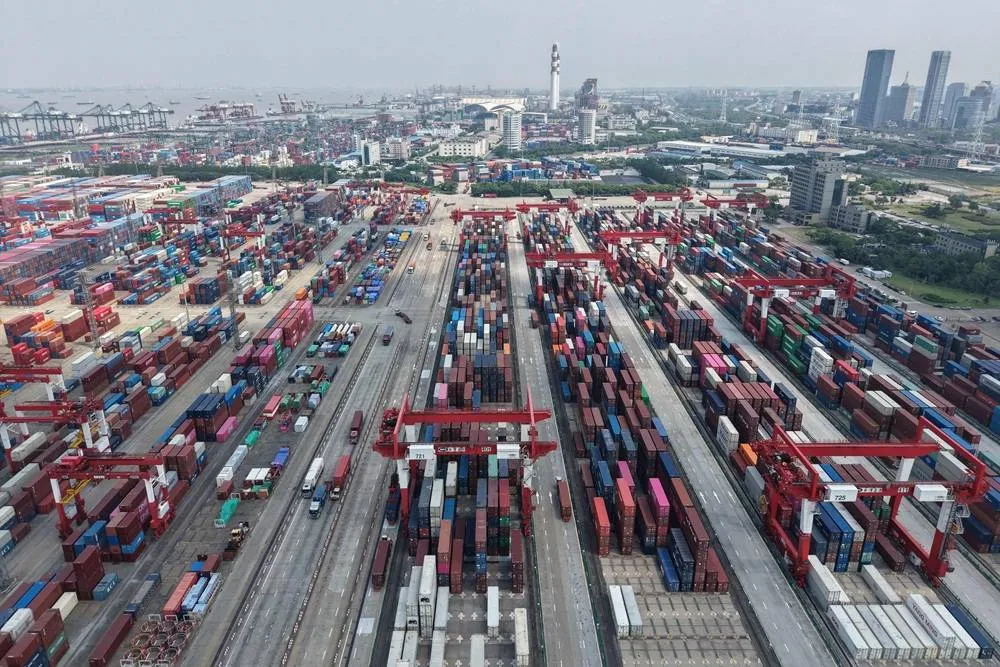China’s export growth slowed to a three-month low in May as US tariffs slammed shipments, while factory-gate deflation deepened to its worst level in two years, heaping pressure on the world’s second-largest economy on both the domestic and external fronts.
US President Donald Trump’s global trade war and the swings in Sino-US trade ties have in the past two months sent Chinese exporters, along with their business partners across the Pacific, on a roller coaster ride and hobbled world growth.
Underscoring the US tariff impact on shipments, customs data showed that China’s exports to the US plunged 34.5% year-on-year in May in value terms, the sharpest drop since February 2020, when the outbreak of the COVID-19 pandemic upended global trade.
Total exports from the Asian economic giant expanded 4.8% year-on-year in value terms in May, slowing from the 8.1% jump in April and missing the 5.0% growth expected in a Reuters poll, customs data showed on Monday, despite a lowering of US tariffs on Chinese goods which had taken effect in early April.
Imports dropped 3.4% year-on-year, deepening sharply from the 0.2% decline in April and worse than the 0.9% downturn expected in the Reuters poll.
Exports had surged 12.4% year-on-year and 8.1% in March and April, respectively, as factories rushed shipments to the US and other overseas manufacturers to avoid Trump’s hefty levies on China and the rest of the world.
While exporters in China found some respite in May as Beijing and Washington agreed to suspend most of their levies for 90 days, tensions between the world’s two largest economies remain high and negotiations are underway over issues ranging from China’s rare earths controls to Taiwan.
Trade representatives from China and the US are meeting in London on Monday to resume talks after a phone call between their top leaders on Thursday.
“Export growth was likely stalled by heavy customs inspections in May due to tightened export control efforts,” said Xu Tianchen, senior economist at the Economist Intelligence Unit, noting that rare earth exports nearly halved last month, while electric machinery exports also slowed significantly.
China’s imports to the US also lost further ground, dropping 18.1% from a 13.8% slide in April.
Zichun Huang, economist at Capital Economics, expects the slowdown in exports growth to “partially reverse this month, as it reflects the drop in US orders before the trade truce,” but cautions that shipments will be knocked again by year-end due to elevated tariff levels.
China’s May trade surplus came in at $103.22 billion, up from the $96.18 billion the previous month.
Other data, also released on Monday, showed China’s import of crude oil, coal, and iron ore dropped last month, underlining the fragility of domestic demand at a time of rising external headwinds.
Beijing in May rolled out a series of monetary stimulus measures, including cuts to benchmark lending rates and a 500 billion yuan low-cost loan program for supporting elderly care and services consumption.
The measures are aimed at cushioning the trade war’s blow to an economy that relied on exports in its recovery from the pandemic shocks and a protracted property market slump.
China’s markets showed muted reaction to the data. The blue-chip CSI300 Index and the benchmark Shanghai Composite Index were up around 0.2%.
DEFLATIONARY PRESSURES
Producer and consumer price data, released by the National Bureau of Statistics on the same day, showed that deflationary pressures worsened last month.
The producer price index fell 3.3% in May from a year earlier, after a 2.7% decline in April and marked the deepest contraction in 22 months, while consumer prices extended declines, having dipped 0.1% last month from a year earlier.
Cooling factory activity also highlights the impact of US tariffs on the world’s largest manufacturing hub, dampening faster services growth as suspense lingers over the outcome of US-China trade talks.
Sluggish domestic demand and weak prices have weighed on China’s economy, which has struggled to mount a robust post-pandemic recovery and has relied on exports to underpin growth.
Retail sales growth slowed last month as spending continued to lag amid job insecurity and stagnant new home prices.
US coffee chain Starbucks said on Monday it would lower prices of some iced drinks by an average of 5 yuan in China.
The core inflation measure, excluding volatile food and fuel prices, registered a 0.6% year-on-year rise, slightly faster than a 0.5% increase in April.
However, Capital Economics Huang said the improvement in core prices looks “fragile”, adding “we still think persistent overcapacity will keep China in deflation both this year and next.”



